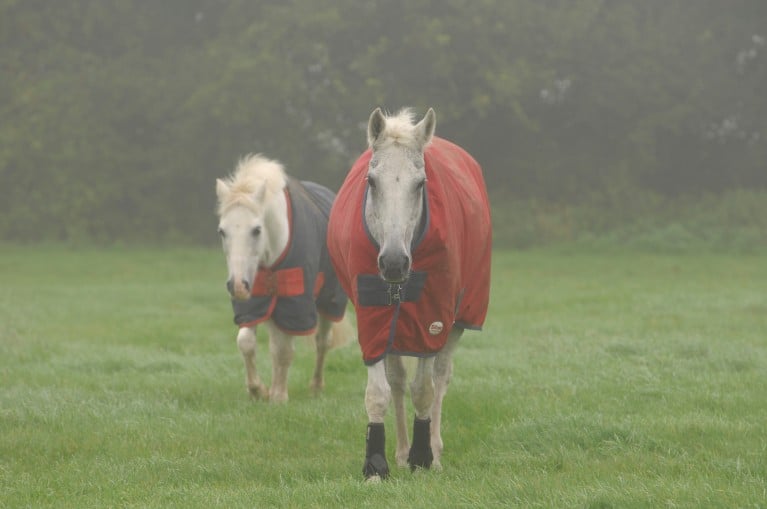Whether your horse lives in or out this winter, pay attention to his coat and spend a little quality time together, too

Good grooming isn’t just about removing mud and making your horse’s coat look nice, it has a whole range of other benefits, such as…
- Promoting circulation.
- Removing waste products, such as dried sweat, dead hair and skin.
- Helping to prevent disease by removing the dead hair and skin which parasites feed on.
- Building muscle tone.
- Improving your relationship with your horse.
But it’s winter, and what if your horse lives out? Surely grooming him will remove the mud and scurf which helps to keep him warm? Here’s how to balance it.
Top tips
- If it’s really cold, don’t remove your horse’s rug completely while you groom him. Instead, fold the rug back to brush his front end and fold it forwards to do his rump.
- If you’re planning to compete through the winter, then a detangler will come in handy. Giving your horse’s tail a daily spray will help to keep it tangle-free and easier to manage.
- If it’s not too cold, dampen your stable rubber with a solution of surgical spirit and water, as this will remove any scurf that you may have missed.
Top tip
If your horse lives out with a field mate, take their rugs off from time to time (if weather conditions allow and the other owner doesn’t mind), so they have a chance to groom each other.
My horse lives out
The chances are that if your horse is living in his field all winter, he’ll become very hairy. This means that if you plan to keep him in work, you may need to consider a mini clip, such as a bib or a trace. But whether he’s clipped or not, his coat will need your attention during the winter months.
While you don’t want to deprive your horse of all the natural oils in his coat, which help to protect him from the elements, a once-over with a dandy brush each day will help you spot any injuries, which may be hidden by long hair. But be careful not to use the dandy brush on mane and tail hair, as it causes the hair to split. A body brush is better suited to these areas.
Feet can suffer during the winter months, so pick them out daily, checking for signs of thrush (usually detected by its pungent smell).
And keep an eye out for signs of mud fever, too (sores/cracked skin around the heel area). Using a good barrier cream before the wet weather gets settled can be a good way to stop it occuring in the first place.
Top tip
Be careful not to use harsh brushes on clipped areas. A rubber brush may work best here, as it is relatively soft. A body brush is also a good option, but remember it may remove some grease from the coat.
My horse is stabled – some or all of the time
Some yards have limited grazing and in winter, this often means limited – or even zero – turn out. This makes grooming sessions even more important, as it helps to break up your horse’s long day while he is standing in.
So, if time permits, why not give him the full works? Try this…
- Start by tying your horse up and picking his feet out.
- Remove his rugs or, if it is really cold, fold them back over his quarters.
- Brush off obvious caked mud and dried sweat using a dandy brush.
- Next, take a body brush and metal curry comb and, starting with the mane, brush your horse thoroughly from head to toe. Use some elbow grease so you really make a difference.
- Give your horse a final polish with a stable rubber, then replace his rugs.
- Untie your horse and place his headcollar around his neck, so that you can carefully brush his head with a body brush. You might find that your horse actually enjoys this and he may appear to nod off to sleep.
- Finally, you can use three different sponges to clean your horse’s dock, eyes and nose in turn.
Horses that live in are just as susceptible to thrush as those who live out, so keep a close eye on these horses’ feet, and make sure their bedding is always dry. Some bedding can dry feet out, so it’s worth talking to your farrier to see if he can recommend a good moisturising cream.
Top tip
Buy three different coloured sponges and mark each one clearly with ‘nose’, ‘dock’ and ‘eyes’, so that you don’t forget which one to use on each area.















